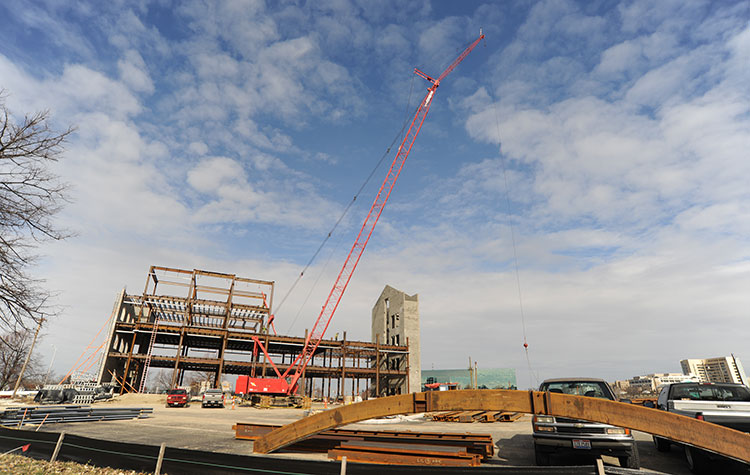Document Type
Article
Publication Date
1-2015
Publication Source
Transportation Research Part C: Emerging Technologies
Abstract
This paper analyzes the effect of left- and right-side merging and diverging areas and other variables such as light condition, roadway pavement condition, drivers’ age and presence of construction work zones on the occurrence frequency of crashes. A 6.5-mile (10.5-km) section of I-75 that passes through downtown Dayton, Ohio was considered. The area of interest has a high traffic volume and consists of different geometric design challenges including closely spaced merging and diverging ramps. A four-year record of crash data (2005–2008) and a statistical modeling technique that assumes a negative binomial distribution on generalized linear models (GLMs) were used to develop separate models for merging and diverging areas. The model results show that left-side merging and diverging areas are critical elements in crash frequency in the vicinity of ramps on freeways. In addition, pavement condition, light condition, and work zones were found to be significant predictors of crash frequency. Specifically, the results indicate that crashes are about 7.88 times more likely to occur on merging areas located on the left side of the freeway lanes compared to those on the right. For diverging areas, about 2.26 times more crashes are likely to occur near diverging areas on the left compared to those diverging on the right side of the freeway. In addition, adverse pavement conditions (such as wet pavement, snow, and ice), adverse light conditions (such as darkness and glare), and presence of work zone were found to be significant variables in the occurrence of crashes.
Highlights:
- We analyze the effect of left-side merging and diverging areas on crash frequency.
- A case study uses a 6.5-mile (10.5-km) section of I-75 in downtown Dayton, Ohio.
- Left-side merging and diverging areas are critical in crash frequency on freeways.
- Crashes are more likely to occur near merging areas on the left side of the freeway.
- Crashes are more likely to occur near diverging areas on the left side of the freeway.
Inclusive pages
78-85
ISBN/ISSN
0968-090X
Document Version
Postprint
Copyright
Copyright © 2015, Elsevier
Publisher
Elsevier
Volume
50
eCommons Citation
Eustace, Deogratias; Aylo, Aline; and Mergia, Worku Y., "Crash Frequency Analysis of Left-side Merging and Diverging Areas on Urban Freeway Segments: A Case Study of I-75 through Downtown Dayton, Ohio" (2015). Civil and Environmental Engineering and Engineering Mechanics Faculty Publications. 1.
https://ecommons.udayton.edu/cee_fac_pub/1
Included in
Automotive Engineering Commons, Transportation Commons, Transportation Engineering Commons, Urban Studies Commons




Comments
The authors' accepted manuscript for this article is available starting in January 2018 in compliance with the publisher's embargo of 36 months. The version of record may contain minor differences that have come about in the copy editing and layout processes. Permission documentation is on file.